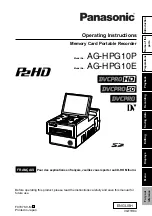
REA
VERIFIER
© REA Elektronik GmbH, 64367 Mühltal, Germany --- REA MLV-2D Manual Version 3 – 21/12/2015
Page 39 of 98
7
Taking measurements
7.1
Code position and measurement results
The various directions in which the code symbol may be rotated compared to the
camera chip position promote "stepping" effects in transition zones from black to
white and vice versa. This stepping effect worsens as the resolution in relation to the
module width drops (i.e. the fewer the camera pixels that image a module). To
minimise this effect, the symbol should be oriented and measured at 90° to the
camera chip wherever possible (see section 5).
Image 90°
Image 45° Orientation
2D symbols contain interference structures that are smaller than the module width. As
such, these smaller interference structures are represented by fewer camera pixels
than the larger modules. The imaging of interference structures is also subject to the
resolution-linked stepping effect. If the test symbol is measured at arbitrary angles of
rotation, the stepping effects on interference structures can produce inconsistent
results. To maximise the level of comparability between measurements, it is
recommended always orienting the codes at the same angle to the camera chip for
measurement.
The camera's resolution must be high enough. The lower limit is set at 5 (or 5x5)
camera pixels per module. This is a specification limit, however, and should not be
used as a reference for normal measurements. Camera module selection should be
oriented on the typical resolution of 10 (or 10x10) pixels per module.
The greater the measuring camera's resolution in relation to the code's module width,
the less the measurement result is affected by the angle of rotation.
For design reasons, every camera has inherent noise (random variations in brightness
between individual camera pixels). In cases where the measurement results lie on an
grading threshold, tiny fluctuations due to the angle of rotation and/or camera noise
can result in the final grade being changed by a whole quality grade (and by more
than one, in certain cases).
















































